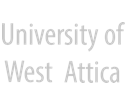Positive constrained iterative deconvolution algorithm applied to three-dimensional images of fluorescence microscopy
Abstract
Cellular and molecular biology seek to understand complex cellular functions and cellinteraction with the environment. To achieve this, different real-time and in situ processes must be described. Digital deconvolution microscopy is one of the most powerful tools used previous to the analyses and quantification of cell molecules. It uses the microscopy system’s optical transfer function to quantify the image degradation produced by lens aberrations. The deconvolution process allows the reconstruction of three-dimensional images that can be then visualized and quantified. The quality of three-dimensional reconstruction depends on the type of deconvolution algorithm used. Linear deconvolution algorithms have shown to be useful when high processing speed is necessary. However, the inversion process involved produces noise amplification. On the other hand, iterative algorithms are more realistic since they work on an estimator that permits the quantification of the level of restoration achieved in every cycle. In this paper we show the results of an evaluation of a particular implementation of an iterative algorithm based on the Van Cittert update scheme. The algorithm was tested on images of biological specimens. Results obtained show that the algorithm conserves intensities, decreases low frequency information and does not amplify high frequencies
Keywords
DOI: 10.26265/e-jst.v2i3.572
Refbacks
- There are currently no refbacks.






